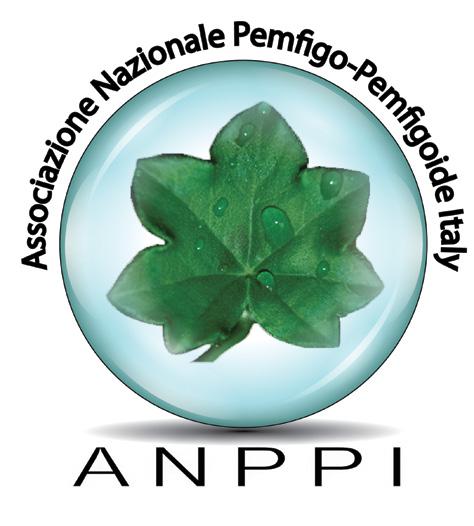
3 minute read
Patty's Story
I've been a professional nurse in Italy since 2003, and until a few years ago I didn't have much knowledge of autoimmune bullous diseases. In 2016, I received a text message from my 45-year-old Aunt Patty. She asked me if I could refer someone that did wound care at home. I told her I could and asked her what kind of wound it was. When she replied “pemphigus,” I asked her to send me a picture since I had never heard of it. As soon as I saw the photo, I realized that the situation was serious and that I needed to evaluate it in person.
I visited Patty’s home the next day, and her sisters answered the door. When I entered, I smelled a strong odor. They took me to her bedroom, and my aunt was almost unrecognizable. She had been lying in bed for 15 days, and she had wounds on 90 percent of her body.
Advertisement
Her skin was sticking to her clothes and the sheets, she was thin, and she couldn't eat because of the wounds in her mouth. She was not able to perform her daily activities, and she was dehydrated. I had never seen anything like it.
First, I sat down to speak to Patty and her two sisters about the clinical situation. Patty developed her first symptoms in 2006. Skin spots appeared on her chest, then the skin peeled off and left wounds that would not heal. Despite living in a big city with many prominent hospitals, it took a year for her to receive a diagnosis of pemphigus vulgaris (PV).
After seven years of corticosteroid treatment, she could no longer tolerate the side effects. So she refused corticosteroids (both tablets and ointment) for her wounds. She made the decision to experiment with alternative therapies based on dietary restrictions and medical herbalism. Patty considered drugs harmful to her health. However, she continued taking pain medication due to the strong pain she felt.
While visiting Patty, I provided directions on wound care and diet. I explained to her that taking herbs with a painkiller to replace corticosteroids would not give her any health benefits. I reminded her about the importance of including protein in her diet, which would help her body heal and exudate her wounds. I advised her to supplement her vegan diet at least with fish.
When I returned home, I researched pemphigus on PubMed. (PubMed comprises more than 30 million citations for biomedical literature from MEDLINE, life science journals, and online books.) I understood that wound care was not enough and medical therapy was necessary. That night, I could not sleep. I thought about Patty and her skinless body. She was left without any protection from infections and was in strong, constant pain. She wasn’t able to go to work, do her daily chores, or even hug her loved ones.
When I searched the internet for other people’s experiences with pemphigus, I found the National Pemphigus/Pemphigoid Association Italy (ANPPI). The next day, as I went to work and picked up my children at school, my thoughts were focused on Patty. I wondered how I could help her and felt powerless. I decided to contact ANPPI’s vice president for advice on how to handle the difficult situation.
I bought Patty non-adherent clothes at the pharmacy and told her we had to go to the hospital for treatment. Patty refused to go, so I looked for a dermatologist that also specialized in homeopathy, and he agreed to visit her at home right away. The dermatologist was shocked by Patty’s condition and explained that alternative medicine could offer her support, but not save her life.
The doctor and I counseled Patty for a long time about therapeutic adherence, alternative medicine, and PV. After many hours, Patty was persuaded to receive treatment, and the doctor organized the hospitalization in a specialized dermatological institute. Patty was completely bandaged and taken to the hospital by ambulance. As soon as she received the appropriate treatment, she immediately felt great pain relief. Later, she was treated with biological immunotherapy that put her in remission. Patty is still in remission today and does not take any medication.
My experience with Patty was shocking. Why did it happen? Why does an informed young woman who lives in a big city decide to refuse the prescribed therapy? I continued gathering information on autoimmune bullous diseases and learned that they are not well-known by many people. I learned that P/P patients have many unmet needs, and this has motivated me to dedicate myself to them. I signed up for the ANPPI and worked hard. I contacted patients, doctors, and researchers with very specific objectives—to increase P/P awareness, strengthen patient resources, engage them in research projects, and make disease and treatments more tolerable in everyday life.
In December 2018, I was appointed as the vice president of the ANPPI. I am happy to work with a team of patients and professionals who share the same enthusiasm for supporting people with these rare diseases and their families. When we are sick, we are defenseless and need someone to take care of us—someone like the ANPPI. When we are healthy, we should take care of others. In the future I don’t want any P/P patients to feel misunderstood or alone. When we are sick, we are defenseless and need someone to take care of us— someone like the ANPPI.
Carola Pulvirenti works at the National Institute for Infectious Diseases in Rome, Italy and was elected Vice President of the National Pemphigus/Pemphigoid Association Italy in 2018. She lives in Rome with her family. The ANPPI can be found online at www.pemfigo.it











